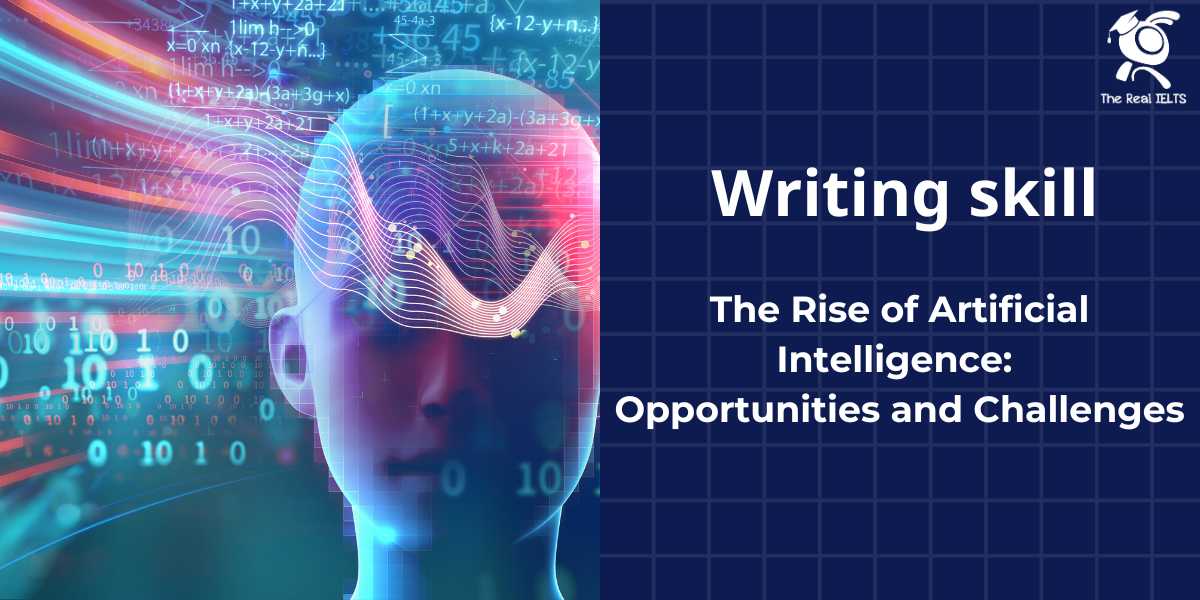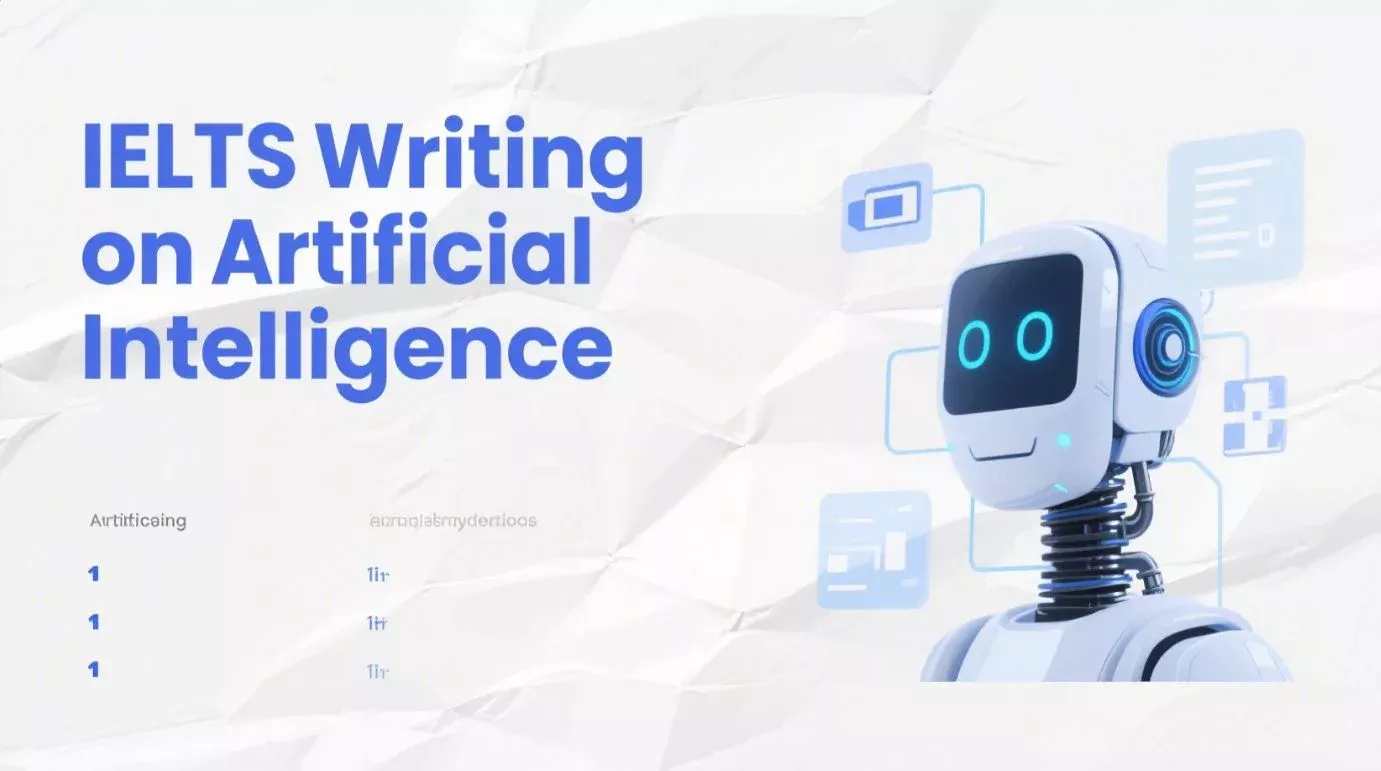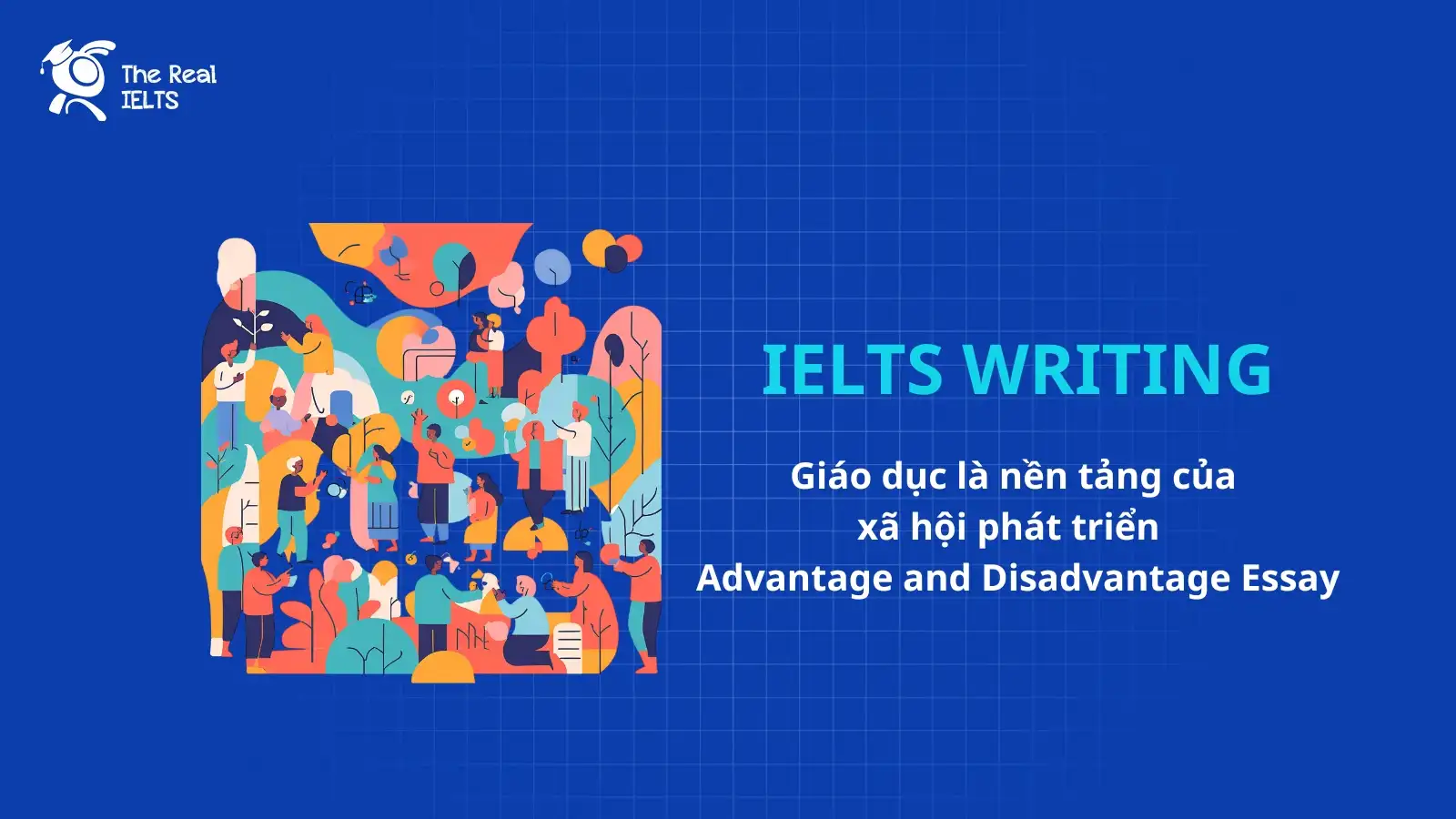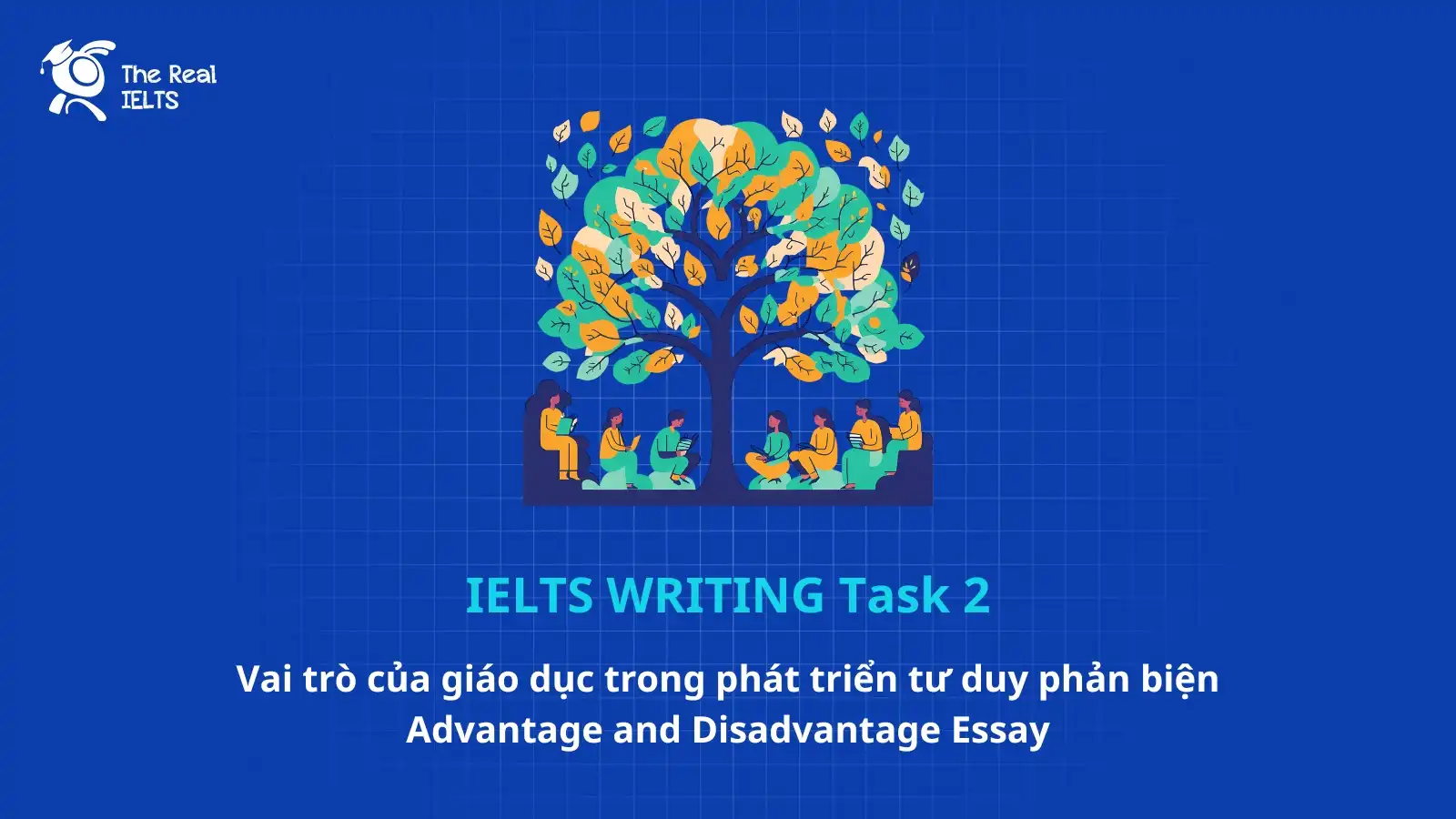Bài Writing nói về Trí tuệ nhân tạo – cơ hội và thách thức. Bài viết này cần nhiều từ vựng tiếng Anh chuyên ngành. Sau đây là dàn ý của bài viết.
Writing Outline: The Rise of Artificial Intelligence: Opportunities and Challenges
I. Introduction
A. Definition of Artificial Intelligence (AI)
B. Brief history of AI development
C. Importance of discussing AI in the modern world
D. Thesis statement: While AI presents numerous opportunities for advancements in various fields, it also poses significant challenges that need to be addressed to harness its full potential.
II. Opportunities Presented by AI
A. Advancements in Healthcare 1. Improved diagnostic accuracy 2. Personalized medicine 3. Robotic surgeries
B. Transformation of Industries 1. Automation of manufacturing processes 2. Enhanced efficiency in supply chains 3. Innovations in agriculture (e.g., smart farming)
C. Enhancements in Daily Life 1. Smart home technologies 2. Personal assistants (e.g., Siri, Alexa) 3. Improved transportation systems (e.g., self-driving cars)
D. Contribution to Scientific Research 1. Data analysis and pattern recognition 2. Accelerated discovery of new materials and drugs 3. Climate modeling and environmental conservation
III. Challenges Posed by AI
A. Ethical and Moral Considerations 1. Bias in AI algorithms 2. Privacy concerns and data security 3. Autonomy and decision-making in critical situations
B. Economic and Employment Impacts 1. Job displacement and workforce transitions 2. Economic inequality and access to AI technologies 3. Need for re-skilling and education
C. Legal and Regulatory Issues 1. Lack of comprehensive legal frameworks 2. Intellectual property concerns 3. Liability and accountability in AI-related incidents
D. Security Risks 1. Cybersecurity threats 2. Misuse of AI in warfare and surveillance 3. Risk of creating autonomous weapons
IV. Balancing Opportunities and Challenges
A. Ethical AI Development 1. Promoting transparency and accountability 2. Implementing unbiased and fair AI systems
B. Economic Policies and Education 1. Supporting workforce transitions 2. Investing in STEM education and AI literacy
C. Legal and Regulatory Frameworks 1. Developing international standards 2. Ensuring compliance and enforcement
D. Security Measures 1. Strengthening cybersecurity protocols 2. International cooperation on AI misuse prevention
V. Conclusion
A. Recap of the opportunities and challenges of AI
B. The necessity for a balanced approach to AI development and implementation
C. Call to action for stakeholders to work together in addressing these challenges while maximizing the benefits of AI
D. Final thoughts on the future of AI and its potential to positively transform society if managed responsibly.
Từ vựng và cụm từ vựng tiếng Anh trong bài viết
- Artificial Intelligence (AI) – Trí tuệ nhân tạo (AI)
- simulation of human intelligence – mô phỏng trí tuệ con người
- think and act like humans – suy nghĩ và hành động như con người
- neural networks – mạng lưới thần kinh
- machine learning – học máy
- driving force – động lực thúc đẩy
- technological advancements – tiến bộ công nghệ
- harness its full potential – khai thác hết tiềm năng của nó
- diagnostic accuracy – độ chính xác chẩn đoán
- medical images – hình ảnh y khoa
- detect diseases – phát hiện bệnh
- assist doctors – hỗ trợ bác sĩ
- making informed decisions – đưa ra quyết định sáng suốt
- personalized medicine – y học cá nhân hóa
- genetic makeup – cấu trúc gen
- robotic surgeries – phẫu thuật bằng robot
- precision and reduce recovery times – chính xác và giảm thời gian hồi phục
- transforming industries – biến đổi các ngành công nghiệp
- automating manufacturing processes – tự động hóa các quy trình sản xuất
- increased productivity – tăng năng suất
- reduced operational costs – giảm chi phí vận hành
- predictive analytics – phân tích dự đoán
- optimizing inventory management – tối ưu hóa quản lý hàng tồn kho
- innovations in agriculture – những đổi mới trong nông nghiệp
- smart farming – nông nghiệp thông minh
- monitor crop health – giám sát sức khỏe cây trồng
- manage resources efficiently – quản lý tài nguyên hiệu quả
- food security – an ninh lương thực
- smart home technologies – công nghệ nhà thông minh
- personal assistants – trợ lý cá nhân
- real-time information – thông tin thời gian thực
- self-driving cars – xe tự lái
- reduce accidents – giảm tai nạn
- traffic congestion – tắc nghẽn giao thông
- scientific research – nghiên cứu khoa học
- analyzing vast amounts of data – phân tích lượng lớn dữ liệu
- identifying patterns – xác định các mẫu
- discovering new materials and drugs – khám phá vật liệu và thuốc mới
- climate modeling – mô hình hóa khí hậu
- environmental conservation – bảo tồn môi trường
- ethical and moral considerations – cân nhắc đạo đức và luân lý
- bias in AI algorithms – sự thiên vị trong thuật toán AI
- privacy concerns – lo ngại về quyền riêng tư
- data security – an ninh dữ liệu
- autonomy and decision-making – tự chủ và ra quyết định
- economic and employment impacts – tác động kinh tế và việc làm
- job displacement – thay thế công việc
- workforce transitions – chuyển đổi lực lượng lao động
- economic inequality – bất bình đẳng kinh tế
- access to AI technologies – tiếp cận công nghệ AI
- re-skilling and education – đào tạo lại và giáo dục
- legal and regulatory issues – các vấn đề pháp lý và quy định
- comprehensive legal frameworks – các khung pháp lý toàn diện
- intellectual property concerns – các lo ngại về sở hữu trí tuệ
- liability and accountability – trách nhiệm pháp lý và trách nhiệm giải trình
- AI-related incidents – các sự cố liên quan đến AI
- security risks – rủi ro an ninh
- cybersecurity threats – mối đe dọa an ninh mạng
- misuse of AI – lạm dụng AI
- warfare and surveillance – chiến tranh và giám sát
- autonomous weapons – vũ khí tự động
- ethical AI development – phát triển AI có đạo đức
- transparency and accountability – minh bạch và trách nhiệm giải trình
- unbiased and fair AI systems – hệ thống AI không thiên vị và công bằng
- economic policies – chính sách kinh tế
- training and reskilling programs – các chương trình đào tạo và đào tạo lại
- STEM education – giáo dục STEM
- AI literacy – hiểu biết về AI
- international standards – tiêu chuẩn quốc tế
- compliance and enforcement – tuân thủ và thực thi
- cybersecurity protocols – giao thức an ninh mạng
- international cooperation – hợp tác quốc tế
- AI misuse prevention – ngăn chặn lạm dụng AI
- global stability and peace – ổn định và hòa bình toàn cầu
Triển khai bài viết
The Rise of Artificial Intelligence: Opportunities and Challenges
I. Introduction
Artificial Intelligence (AI) refers to the simulation of human intelligence in machines that are designed to think and act like humans. AI has evolved rapidly since its inception in the mid-20th century, with significant milestones such as the development of neural networks and machine learning. In today’s world, AI is a driving force behind many technological advancements, making it crucial to discuss its potential and pitfalls. While AI presents numerous opportunities for advancements in various fields, it also poses significant challenges that need to be addressed to harness its full potential.
II. Opportunities Presented by AI
A. Advancements in Healthcare
AI has the potential to revolutionize healthcare. With improved diagnostic accuracy, AI algorithms can analyze medical images, detect diseases at early stages, and assist doctors in making informed decisions. Personalized medicine is another breakthrough, where AI can tailor treatments based on an individual’s genetic makeup and lifestyle, enhancing the effectiveness of therapies. Robotic surgeries, guided by AI, offer precision and reduce recovery times, leading to better patient outcomes.
B. Transformation of Industries
AI is transforming industries by automating manufacturing processes, leading to increased productivity and reduced operational costs. In supply chains, AI enhances efficiency through predictive analytics, optimizing inventory management and reducing waste. Innovations in agriculture, such as smart farming, utilize AI to monitor crop health, manage resources efficiently, and increase yields, contributing to food security.
C. Enhancements in Daily Life
AI is increasingly integrated into our daily lives through smart home technologies that provide convenience and energy efficiency. Personal assistants like Siri and Alexa simplify tasks, manage schedules, and offer real-time information. In transportation, self-driving cars promise to reduce accidents and traffic congestion, making travel safer and more efficient.
D. Contribution to Scientific Research
AI accelerates scientific research by analyzing vast amounts of data and identifying patterns that humans might miss. This capability is crucial in discovering new materials and drugs, expediting the development of treatments for diseases. AI also plays a vital role in climate modeling and environmental conservation, providing insights that help mitigate the impacts of climate change.
III. Challenges Posed by AI
A. Ethical and Moral Considerations
AI algorithms can inherit biases present in training data, leading to unfair outcomes in areas like hiring and law enforcement. Privacy concerns arise from the vast amounts of data AI systems collect and analyze, risking individuals’ personal information. Moreover, the autonomy and decision-making of AI in critical situations, such as healthcare and military applications, raises moral questions about decision-making and accountability.
B. Economic and Employment Impacts
The automation brought by AI can lead to job displacement, particularly in industries reliant on routine tasks. This shift necessitates workforce transitions and re-skilling programs to prepare employees for new roles. Economic inequality may widen if access to AI technologies is limited to certain groups, emphasizing the need for inclusive policies.
C. Legal and Regulatory Issues
The rapid development of AI has outpaced the creation of comprehensive legal frameworks, leading to gaps in regulation. Intellectual property concerns arise when determining the ownership of AI-generated content. Additionally, liability and accountability in AI-related incidents, such as accidents involving autonomous vehicles, remain unresolved issues.
D. Security Risks
AI systems are vulnerable to cybersecurity threats, as malicious actors can exploit weaknesses in algorithms. The misuse of AI in warfare and surveillance poses significant risks, with the potential for creating autonomous weapons. International cooperation is essential to prevent the misuse of AI and address these security concerns.
IV. Balancing Opportunities and Challenges
A. Ethical AI Development
Promoting transparency and accountability in AI development is crucial to building trust. Implementing unbiased and fair AI systems requires rigorous testing and validation to ensure they serve all sections of society equitably.
B. Economic Policies and Education
Supporting workforce transitions through training and reskilling programs is vital to mitigate the impact of job displacement. Investing in STEM education and AI literacy will prepare future generations to thrive in an AI-driven world.
C. Legal and Regulatory Frameworks
Developing international standards for AI governance will help create a cohesive approach to regulation. Ensuring compliance and enforcement of these standards will protect individuals and society from potential harms.
D. Security Measures
Strengthening cybersecurity protocols is essential to safeguard AI systems from attacks. International cooperation on preventing the misuse of AI, particularly in warfare and surveillance, is necessary to maintain global stability and peace.
V. Conclusion
AI presents unprecedented opportunities for advancements in healthcare, industry, daily life, and scientific research. However, it also poses significant ethical, economic, legal, and security challenges. A balanced approach to AI development and implementation is crucial to maximizing its benefits while minimizing its risks. Stakeholders must work together to address these challenges and ensure that AI is developed and used responsibly. By doing so, AI has the potential to positively transform society and improve the quality of life for all.
Cấu trúc câu và cấu trúc ngữ pháp tiếng Anh trong bài viết
- Relative Clauses (Mệnh đề quan hệ):
- “Artificial Intelligence (AI) refers to the simulation of human intelligence in machines that are designed to think and act like humans.”
- “With improved diagnostic accuracy, AI algorithms can analyze medical images, detect diseases at early stages, and assist doctors in making informed decisions.”
- Passive Voice (Câu bị động):
- “AI has evolved rapidly since its inception in the mid-20th century.”
- “Significant challenges need to be addressed to harness its full potential.”
- “Privacy concerns arise from the vast amounts of data AI systems collect and analyze.”
- Infinitive Phrases (Cụm động từ nguyên mẫu):
- “Promoting transparency and accountability in AI development is crucial to building trust.”
- “Supporting workforce transitions through training and reskilling programs is vital to mitigate the impact of job displacement.”
- Gerund Phrases (Cụm động từ thêm -ing):
- “Analyzing vast amounts of data and identifying patterns that humans might miss.”
- “Implementing unbiased and fair AI systems requires rigorous testing and validation.”
- Conditionals (Câu điều kiện):
- “If access to AI technologies is limited to certain groups, economic inequality may widen.”
- “If managed responsibly, AI has the potential to positively transform society.”
- Complex Sentences (Câu phức):
- “In today’s world, AI is a driving force behind many technological advancements, making it crucial to discuss its potential and pitfalls.”
- “The rapid development of AI has outpaced the creation of comprehensive legal frameworks, leading to gaps in regulation.”
- Parallel Structure (Cấu trúc song song):
- “AI is transforming industries by automating manufacturing processes, leading to increased productivity and reduced operational costs.”
- “Promoting transparency and accountability in AI development is crucial to building trust.”
- Noun Phrases (Cụm danh từ):
- “Personalized medicine is another breakthrough.”
- “Ethical and moral considerations.”
- Adverbial Clauses (Mệnh đề trạng ngữ):
- “While AI presents numerous opportunities for advancements in various fields, it also poses significant challenges.”
- “As malicious actors can exploit weaknesses in algorithms, AI systems are vulnerable to cybersecurity threats.”
- Subordinate Clauses (Mệnh đề phụ thuộc):
- “Supporting workforce transitions through training and reskilling programs is vital to mitigate the impact of job displacement.”
- “Ensuring compliance and enforcement of these standards will protect individuals and society from potential harms.”
- Cause and Effect (Nguyên nhân và kết quả):
- “This capability is crucial in discovering new materials and drugs, expediting the development of treatments for diseases.”
- “The misuse of AI in warfare and surveillance poses significant risks.”
- Comparative and Superlative (So sánh hơn và so sánh nhất):
- “AI offers precision and reduces recovery times, leading to better patient outcomes.”
- “AI has the potential to positively transform society if managed responsibly.”
Cấu trúc ngữ pháp nổi bật
- Present Simple Tense:
- “AI refers to the simulation of human intelligence.”
- “AI is increasingly integrated into our daily lives.”
- Present Perfect Tense:
- “AI has evolved rapidly since its inception in the mid-20th century.”
- “The rapid development of AI has outpaced the creation of comprehensive legal frameworks.”
- Future Tense:
- “Self-driving cars promise to reduce accidents and traffic congestion.”
- “AI has the potential to positively transform society.”
- Modals (Động từ khiếm khuyết):
- “AI can analyze medical images, detect diseases, and assist doctors.”
- “International cooperation is essential to prevent the misuse of AI.”
- Gerunds (Danh động từ):
- “Analyzing vast amounts of data and identifying patterns.”
- “Implementing unbiased and fair AI systems requires rigorous testing.”
- Infinitives (Động từ nguyên mẫu):
- “To harness its full potential.”
- “To build trust.”
Học lại bài cũ: Writing skill part 19: Exploring the Concept of Beauty Across Cultures.















